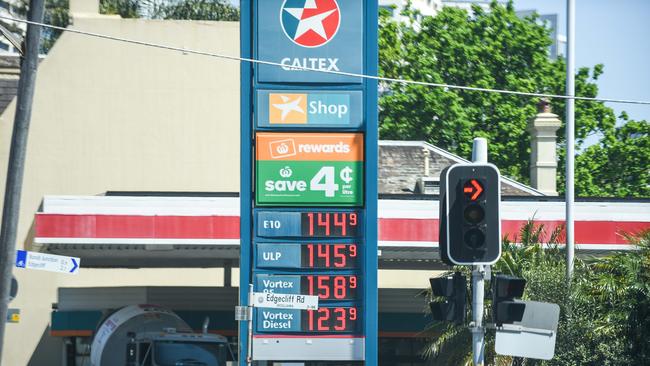Petrol prices see largest weekly increase
Despite wholesale prices barely budging, the price Australians pay at the pump has surged, hitting those in cities the most.

The national average price of unleaded petrol saw the largest increase on record last week, jumping 14.4c a litre to an average price of 134c, according to the Australian Institute of Petroleum.
The price increase to January 24 represents the largest one-week rise in the 17 years on record, according to CommSec, but the impact across the country was wildly disproportionate: prices in metro areas rose by 19.7c to 138c a litre, while rural prices lifted just 3.7c to 124.2c.
The major east coast cities and Adelaide bore the brunt of the increase, with Melbourne prices up 26.2c to 145.4c a litre and Sydney prices up 22c to 141c a litre.
Brisbane prices lifted 22.9c to 140.6c a litre while Adelaide lifted 20.5c to 137.4c.
Perth, Darwin, Canberra and Hobart didn’t see a price increase of more than 2.5c, with the average price paid across these cities being just 123.6c.
CommSec chief economist Craig James said based on regional and wholesale prices, the cost of petrol should not have risen this much in east coast capitals.
“Based on regional and wholesale prices, pump prices should have lifted around 2-3c a litre,” he said.
“But the modest lift in global prices has occurred at the same time as the end of so-called discounting cycles in major capital cities.”
The end of the discounting cycle is evident in the two-month average gross retailer margin, which lifted from a six month low of 15.36c a litre to 16.01c.
The terminal gate price, which is what wholesale petrol customers pay for fuel, went up by only 1.8c to 112.4c a litre last week.
The Singapore gasoline price, a key benchmark for the Australian price, actually fell from 11 months highs, down 0.6 per cent to $US60.13 a barrel.
The Australian Institute of Petroleum said there is a “time lag” between the Singapore and Australian price that occurs if “prices are going up (when the lag slows price rises to consumers) or prices are going down (when the lag delays price falls).”
Mr James said it was disappointing to see petrol prices rising at a time when consumer spending needs to be encouraged, but said it was likely prices would begin to fall in the coming weeks.
“The spike in petrol prices has potential to dampen consumer sentiment and spending at a time when people need to be spending to boost economic activity,” he said.
“The good news is that capital city pump prices are easing from cyclical highs of the discounting cycle. Prices are falling quickly in Adelaide but only slowly in Sydney, Melbourne and Brisbane.
“Over the next 2-3 weeks, pump prices should fall by around 25-30c a litre.
“So motorists should top up rather than fill up with prices just off cyclical highs.”



To join the conversation, please log in. Don't have an account? Register
Join the conversation, you are commenting as Logout